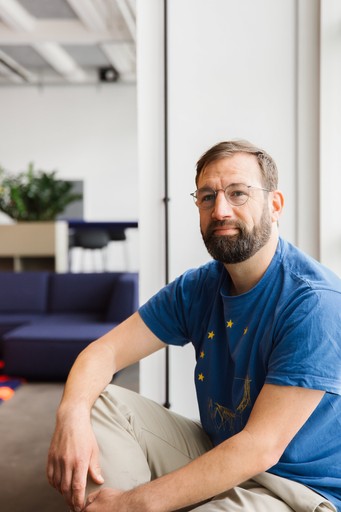Modern content management has many names: Headless CMS, H CMS or Decoupled CMS –all these terms describe a trend in content management that has been growing for about five years. Compared to traditional content management systems, headless CMS have the advantage that they very strictly separate content and presentation.
This eliminates many of the limitations of classic content management systems: content in the form of text, images and videos becomes universally usable. Kaan Karaca, Executive Technical Director and Stephan Clasen, Technical Director of denkwerk give an insight in the new live lecture series:
Headless CMS is becoming increasingly important
The particular strength of a headless CMS lies in its multi-channel and multi-client capability. Nowadays, this feature is becoming increasingly important, because content is often played out in many different ways: Besides the website, this can be mobile apps and or out-of-home media such as infotainment systems, all of which would otherwise require their own content management. Thanks to the strict separation of front-end and back-end, it is also possible to open up new channels for playing out the content at any time.
Companies can design their frontends entirely according to their own ideas and draw on existing capacities: If there are already in-house Angular, Java Script or PHP developers, for example, it is possible to use their strengths instead of – as with traditional content management systems – positioning a new technology within the company again. This often significantly shortens the time-to-market for a new content product.
"In general, a headless CMS is also a CMS system. I have a content management system where I can add content [...] and images. [...] But I play out this information (and) data in a form (so) that the final representation is detached from it."
Kaan Karaca, Executive Technical Director at denkwerk
Examples from practice
There are several areas in which denkwerk recommends headless CMSs: In addition to multichannel content, a headless CMS can, for example, be used well to expand an existing eCommerce system with digital content: Typically, eCommerce platforms are not or only marginally designed for the creation of content and thus reach their limits in this area.
A headless CMS can not only help to implement content ideas quickly, but also to create future security: Thanks to its multichannel capabilities, content simply becomes an API element in the company's portfolio – and allows information to be played out on new channels with relatively little effort. The headless CMS stands on its own and does not require complex interventions in existing systems, ensuring compatibility with existing applications.
In this context, headless CMS solutions are increasingly offered in the form of PaaS or SaaS solutions: Through cloud-based use with a third-party provider, it is possible to implement this content option very quickly without having to worry about technical or security-related content. Of course, it is essential to develop a sensible concept for handling data in the cloud in advance.
"Our customer already has a very well running e-commerce system, that is running great. Now they want to add editorial content. And with many e-commerce systems, sooner or later you reach a limit. Then, of course, it's nice if I can bring in a content system that doesn't aggressively interfere with this server landscape or my existing architecture, but instead provides an interface that I can use to get the content from my already running system simply via an API web interface."
Stephan Clasen, Technical Director at denkwerk
Upgrade traditional CMS or keep it?
However, headless content management systems are not suitable for every company: Those who use an existing CMS "only" to load their own website do not necessarily have to change – in this case it may be advisable to stay with the old system, unless there is a desire for more content in additional areas. In principle, there are also good reasons to stay with an existing system – or to expand it with headless functions in the form of a hybrid solution.
"There is no such thing as THE best system, but there is the best fit."
Stephan Clasen, Technical Director at denkwerk
denkwerk helps with the implementation
In principle, headless CMS are of course well suited to raise the company's content strategy to a new level. However, it is not always necessary to replace existing solutions. Denkwerk can help with the implementation, determine the need and suggest alternatives: with many years of experience in the implementation of practical digitisation projects, we can quickly identify whether and which headless system suits your company – or whether you can perhaps simply stay with your established structures. Because at the end of the day, even entering or switching to a headless CMS is a strategic decision that will accompany your company for many years. Accordingly, it is important to set the right course at the beginning.
Are you interested in the topic of headless content management? We have put together a white paper for you in our blog that looks at the topic in detail:
Share this Spark
